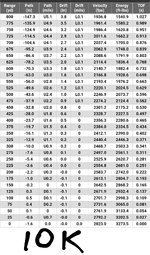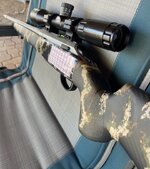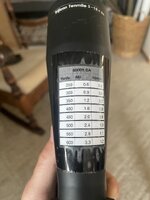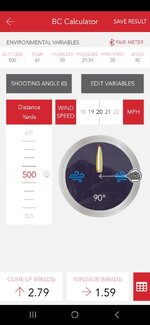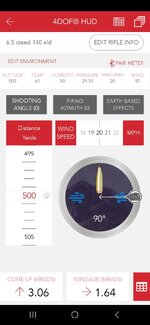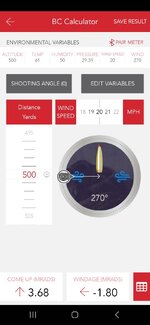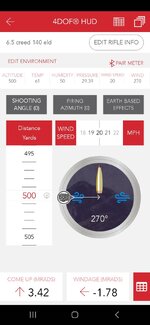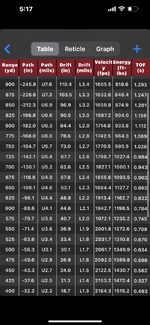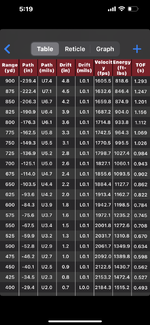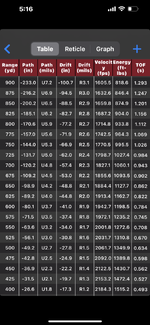What’s the simplest way to make a dope card for hunting? Here’s what I mean. I’ll try to keep it sort of simple so someone actually replies, but it’s somewhat complex.
For my 6.5 CM, I zero at 100. Using the Hornady app I can make hits at 550 yards by putting in the exact environmentals.
However, I was planning to make a cheat sheet for some longer range food plots stands. Let’s say 400 yards max.
If I put in 0 mph wind it tells me 400 yards the dial is 8.1 MOA.
If I put in 15 mph wind from 9:00 direction it tells me to dial 9.4 MOA and 3.7 MOA wind.
If I put in a 15 mph wind from 3:00 direction it tells me to dial 7.0 MOA and 3.1 MOA.
I hope someone has stuck with me. So it seems like I should have a column for all 3 cases for direct full value side winds? It’s a pretty big difference 9.4 vs 7.0 MOA based on wind direction. Does anyone hunting over a field just use the app if you have time to figure out your dialing?
I’m just looking for a way to balance the complexity without having such a confusing card with my dials on it that in the moment I screw it up. How do you guys make a cheat sheet to easily get your holds?
For my 6.5 CM, I zero at 100. Using the Hornady app I can make hits at 550 yards by putting in the exact environmentals.
However, I was planning to make a cheat sheet for some longer range food plots stands. Let’s say 400 yards max.
If I put in 0 mph wind it tells me 400 yards the dial is 8.1 MOA.
If I put in 15 mph wind from 9:00 direction it tells me to dial 9.4 MOA and 3.7 MOA wind.
If I put in a 15 mph wind from 3:00 direction it tells me to dial 7.0 MOA and 3.1 MOA.
I hope someone has stuck with me. So it seems like I should have a column for all 3 cases for direct full value side winds? It’s a pretty big difference 9.4 vs 7.0 MOA based on wind direction. Does anyone hunting over a field just use the app if you have time to figure out your dialing?
I’m just looking for a way to balance the complexity without having such a confusing card with my dials on it that in the moment I screw it up. How do you guys make a cheat sheet to easily get your holds?
Last edited:

